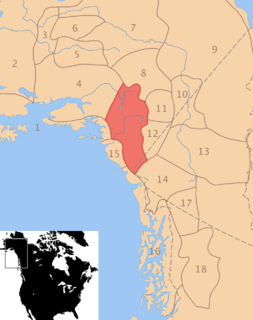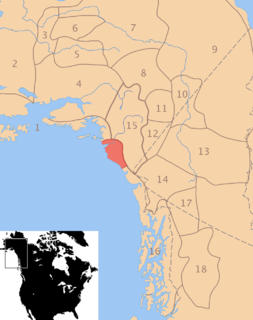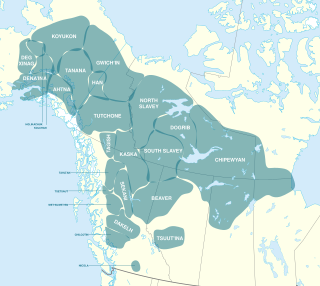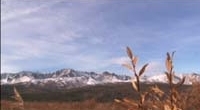 W
WAhtna or Ahtena is the Na-Dené language of the Ahtna ethnic group of the Copper River area of Alaska. The language is also known as Copper River or Mednovskiy.
 W
WAleut or Unangam Tunuu is the language spoken by the Aleut (Unangax̂) living in the Aleutian Islands, Pribilof Islands, Commander Islands, and the Alaska Peninsula. Aleut is the sole language in the Aleut branch of the Eskimo–Aleut language family. The Aleut language consists of three dialects, including Eastern, Atkan, and Attuan.
 W
WThe Eskimo–Aleut, Inuit-Yupik-Unangan, or Eskaleut languages are a language family native to Alaska, Nunavut, northern Northwest Territories, northern Quebec (Nunavik), northern Labrador (Nunatsiavut), Greenland and far eastern Russia. It is also known as Eskaleutian, Eskaleutic or Inuit–Yupik-Unangan.
 W
WEyak was a Na-Dené language, historically spoken by the Eyak people, indigenous to south-central Alaska, near the mouth of the Copper River. The name Eyak comes from a Chugach Sugpiaq name (Igya'aq) for an Eyak village at the mouth of the Eyak River.
 W
WThe Gwichʼin language belongs to the Athabaskan language family and is spoken by the Gwich'in First Nation (Canada) / Alaska Native People. It is also known in older or dialect-specific publications as Kutchin, Takudh, Tukudh, or Loucheux. Gwich'in is spoken primarily in the towns of Inuvik, Aklavik, Fort McPherson, and Tsiigehtchic, all in the Northwest Territories and Old Crow in Yukon of Canada. In Alaska of the United States, Gwichʼin is spoken in Beaver, Circle, Fort Yukon, Chalkyitsik, Birch Creek, Arctic Village, Eagle, and Venetie.
 W
WHaida is the language of the Haida people, spoken in the Haida Gwaii archipelago off the coast of Canada and on Prince of Wales Island in Alaska. An endangered language, Haida currently has 24 native speakers, though revitalization efforts are underway. At the time of the European arrival at Haida Gwaii in 1774, it is estimated that Haida speakers numbered about 15,000. Epidemics soon led to a drastic reduction in the Haida population, which became limited to three villages: Masset, Skidegate, and Hydaburg. Positive attitudes towards assimilation combined with the ban on speaking Haida in residential schools led to a sharp decline in the use of the Haida language among the Haida people, and today almost all ethnic Haida use English to communicate.
 W
WThe Inuit languages are a closely related group of indigenous American languages traditionally spoken across the North American Arctic and to some extent in the subarctic in Labrador. The related Yupik languages are spoken in western and southern Alaska and in the far east of Russia, but are severely endangered in Russia today and spoken only in a few villages on the Chukchi Peninsula. The Inuit live primarily in three countries: Greenland, Canada, and the United States.
 W
WIñupiaq, Inupiaq, Iñupiat, Inupiat, Iñupiatun or Alaskan Inuit is an Inuit language, or perhaps languages, spoken by the Iñupiat people in northern and northwestern American Alaska, as well as a small adjacent part of the Canadian Northwest Territories. The Iñupiat language is a member of the Inuit-Yupik-Unangax language family, and is closely related to other Inuit languages of Canada and Greenland. There are roughly 2,000 speakers. It is considered a threatened language with most speakers at or above the age of 40. Iñupiaq is an official language of the State of Alaska.
 W
WNorthern Athabaskan is a geographic sub-grouping of the Athabaskan language family spoken by indigenous peoples in the northern part of North America, particularly in Alaska, Yukon, and the Northwest Territories. The Northern Athabaskan languages consist of 31 languages that can be divided into seven geographic subgroups.
 W
WTanacross is an endangered Athabaskan language spoken by fewer than 60 people in eastern Interior Alaska.
 W
WThe Tlingit language is spoken by the Tlingit people of Southeast Alaska and Western Canada and is a branch of the Na-Dene language family. Extensive effort is being put into revitalization programs in Southeast Alaska to revive and preserve the Tlingit language and culture.
 W
WThe Tsimshianic languages are a family of languages spoken in northwestern British Columbia and in Southeast Alaska on Annette Island and Ketchikan. All Tsimshianic languages are endangered, some with only around 400 speakers. Only around 2,170 people of the ethnic Tsimshian population in Canada still speak a Tsimshian language; about 50 of the 1,300 Tsimshian people living in Alaska still speak Coast Tsimshian. Tsimshianic languages are considered by most linguists to be an independent language family, with four main languages: Coast Tsimshian, Southern Tsimshian, Nisg̱a’a, and Gitksan.
 W
WThe Yupik languages are the distinct languages of the several Yupik peoples of western and south-central Alaska and northeastern Siberia. The Yupik languages differ enough from one another that they are not mutually intelligible, although speakers of one of the languages may understand the general idea of a conversation of speakers of another of the languages. One of them, Sirenik, has been extinct since 1997.